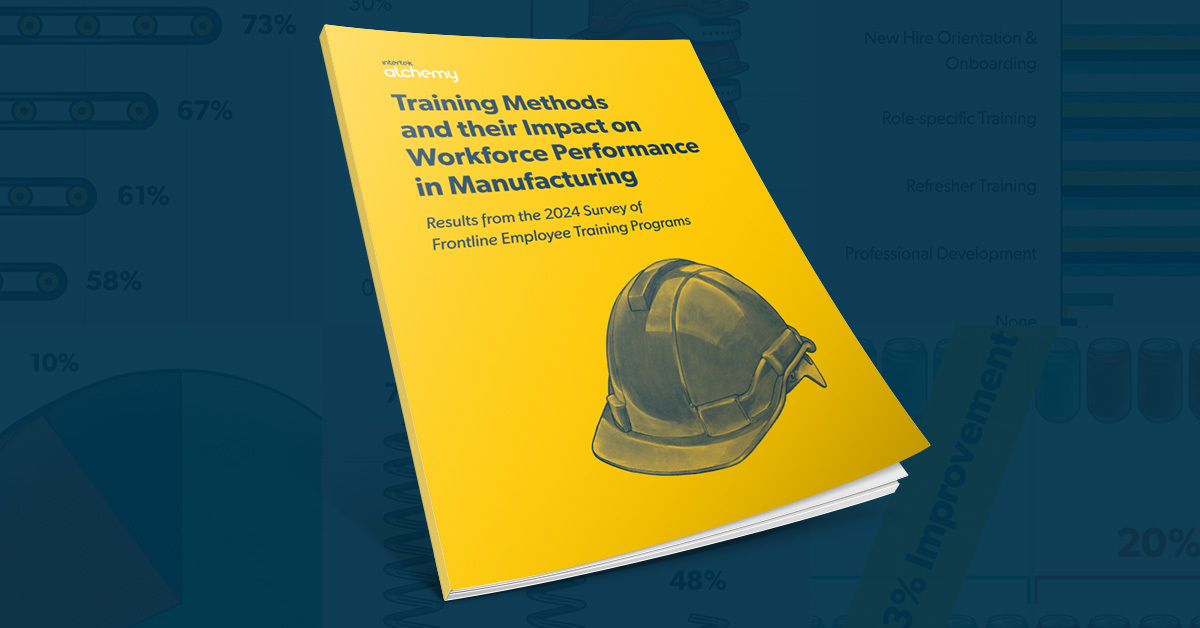Building a Better Training Program with Cross-functional Participation

The demand for a highly skilled and adaptable workforce is greater than ever in the manufacturing industry. Training that is developed in departmental silos will not fully address the multifaceted challenges faced by manufacturers. Training is often designated to the L&D team. While this team is a key driver, it is crucial to adopt a more holistic approach and involve the rest of the company in order to achieve optimal efficiency and maintain a competitive edge. Cross-functional participation is a powerful strategy that can transform training programs and elevate overall performance.
Breaking Down Silos: The Essence of Cross-Functional Participation
Cross-functional participation involves bringing together individuals from various departments (safety, operations, quality, etc.) within the organization to collaborate on the development of training programs. This collaborative approach ensures that training initiatives are comprehensive, relevant, and aligned with the overall business goals.
The recent research study, “Training Methods and their Impact on Workforce Performance in Manufacturing,” found a number of training best practices that lead to greater performance and safety. The study revealed that 68% of companies say their learning management/training team includes cross-functional team members. It’s no surprise these companies fared better in desired outcomes than the 32% that responded that they don’t have cross-functional team members included. So, let’s dive into why it is so important.
Why Cross-Functional Participation Matters
Holistic Perspective: Cross-functional teams provide a 360-degree view of the training needs. For instance, production teams can highlight the practical challenges on the shop floor, while quality control can ensure that training aligns with compliance standards. Safety teams can incorporate critical safety protocols, and HR can focus on effective communication and engagement strategies. This holistic perspective ensures that the training program addresses all facets of the operation. And, importantly, it ensures what one department adds to training doesn’t conflict or nullify the training another department is providing.
Enhanced Relevance: Training programs developed in silos often fail to resonate with all employees. Cross-functional participation ensures that training content is relevant and applicable across different departments. This relevance boosts engagement and retention, as employees can see the direct impact of the training on their day-to-day tasks.
Highly Motivated Employees: Having a cross-functional learning management/training team yields a 44% improvement in employee motivation. It turns out motivation rubs off. Having cross-functional participation in your learning management team shows employees that leaders throughout the organization are motivated to succeed and, importantly, that they care about employee development. On the flipside, lack of participation shows lack of motivation from leadership. It is unsurprising this results in greater likelihood the staff is unmotivated to perform well. It is what they see from their leaders after all.
Innovation and Continuous Improvement: When diverse teams come together, they bring a wealth of ideas and experiences to the table. This diversity sparks innovation, leading to creative solutions and continuous improvement. In the manufacturing industry, where innovation is key to maintaining competitiveness, cross-functional participation in training development can be a game-changer.
Improved Buy-in and Ownership: Employees are more likely to embrace and commit to training programs they have had a hand in developing. Cross-functional participation fosters a sense of ownership and accountability, leading to higher levels of engagement and a greater willingness to apply the training in real-world scenarios. In fact, the same research showed that employees for manufacturers with a cross-functional training approach are 43% more likely to take proactive action to identify and stop a risk or quality defect from occurring.
Integrating Cross-Functional Participation in Training Development
To harness the power of cross-functional participation, manufacturing companies can take the following steps:
- Form a Cross-functional Training Committee: Establish a committee with representatives from various departments. Ensure that this committee has a clear mandate and is empowered to make decisions related to training development.
- Conduct Needs Assessments: Collaborate to conduct comprehensive needs assessments that take into account the unique requirements of each department. This can involve surveys, interviews, and on-the-ground observations.
- Leverage Technology and Training Modules: Utilize robust but user-friendly training platform like the Alchemy Training System to make your efforts easier and more trackable. Design training modules that integrate insights from all departments. For example, a module on equipment operation can include input from production, maintenance, and safety teams to ensure it covers all critical aspects.
- Foster Ongoing Collaboration: Make cross-functional participation an ongoing practice. Regularly review and update training programs to keep pace with evolving industry trends and organizational needs.
In the manufacturing industry, where efficiency, quality, and safety are paramount, the power of cross-functional participation in training development cannot be overstated. By breaking down silos and fostering collaboration, manufacturing companies can create training programs that are comprehensive, relevant, and impactful. This not only enhances the skills and capabilities of the workforce but also drives innovation, continuous improvement, and overall organizational success. Embracing cross-functional participation in your training development process can unlock the full potential of your manufacturing operations.





